

Recent evidence shows that the city of
Heraklion was already fortified in the Hellenistic period. As part of a
generated defensive plan aiming to confront with
the increasing
Arab threat, the enceinte was reconstructed by the Byzantines in the 7th
or 8th c. A.D. with a large amount of reused ancient blocks; it had
vertical walls and quadrangular towers and it was protected by a moat, which
gave to the city its long lasting Arab name, Rabdh el-Chandaq (the fortress of
the moat), Chandax in the Middle Byzantine and Candia in the Venetian period.
The Arabs reinforced the enceinte using an external coating of mortar mixt with
animal hair, which was revealed in recent excavations. When Nicephoros Phocas
recaptured the city in 961, he demolished parts of the enceinte to neutralize
its defensive capability. It is though still traceable, incorporated in the
remains of the older enceinte, which was restored by the Venetians after their
settlement in 1211.
This Byzantine enceinte, with restorations
and additions, was efficient for the city’s defense up to the invention of the
gun powder and it is depicted in maps and designs of the 15th c.,
such as the sketch of the Florentine monk Christoforo Buondelmonti, who visited
Candia in 1415.
The Ottoman threat forced Venice to design
a new enceinte, resistible to the use of heavy powder guns, which also ought to
enclose the suburbs (borgi), existing from the Byzantine period. The decision
was made under civilian pressure in 1462, but it was thought to be wiser, in
the mean-time, to ameliorate the defensive capability of the existing enceinte
by the addition to of an inclined bulwark, which leaned across the southern
side of the old vertical walls with transverses joined together with vaults.
The reinforcement works begun in 1472 and they were not finished until 1525.
They included the reform of the main gate, known as Portone and later as
Voltone, which was flanked by a pair of towers.
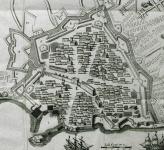 | 4. The fortifications of Candia | |
|---|---|---|
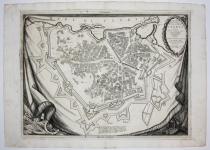 | 4.2 The fortifications of the 16th c. | |
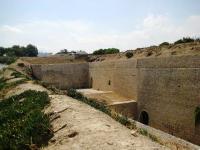 | 4.2.1 The Bastions | |
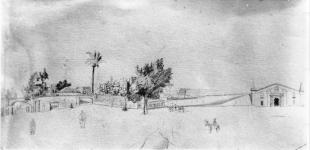 | 4.2.2. The Gates of Candia | |
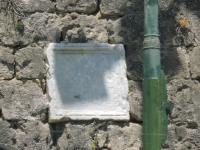 | 4.2.3 The coats of arms and the emblems | |
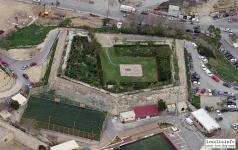 | 4.3 The fortification walls through the centuries |